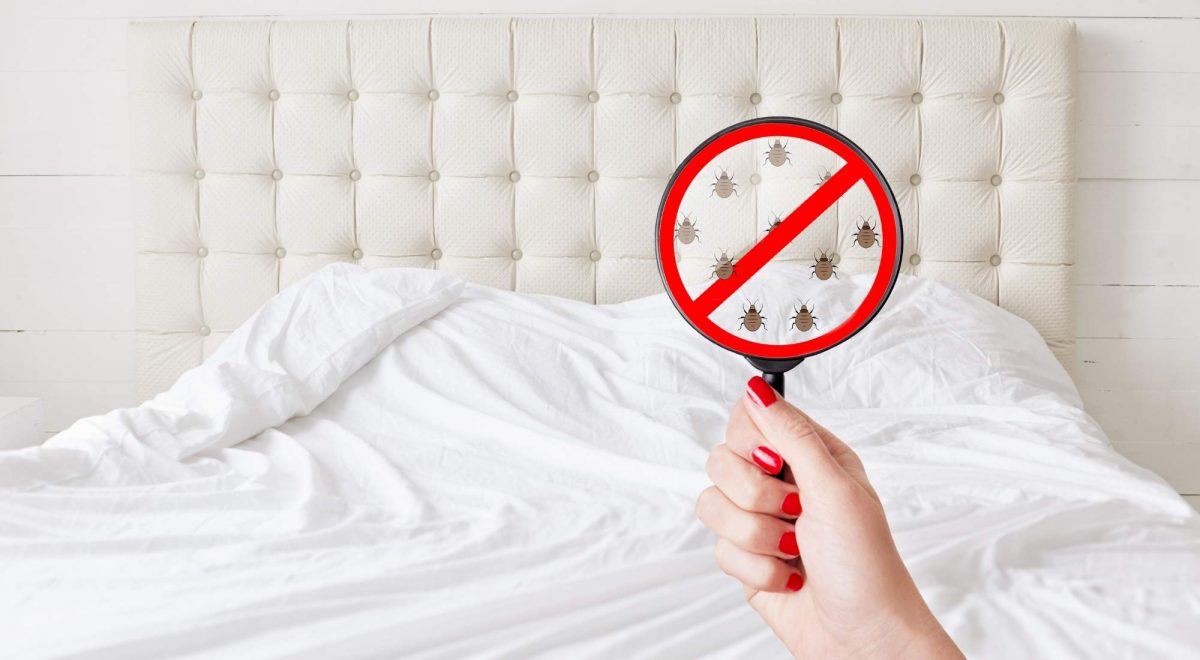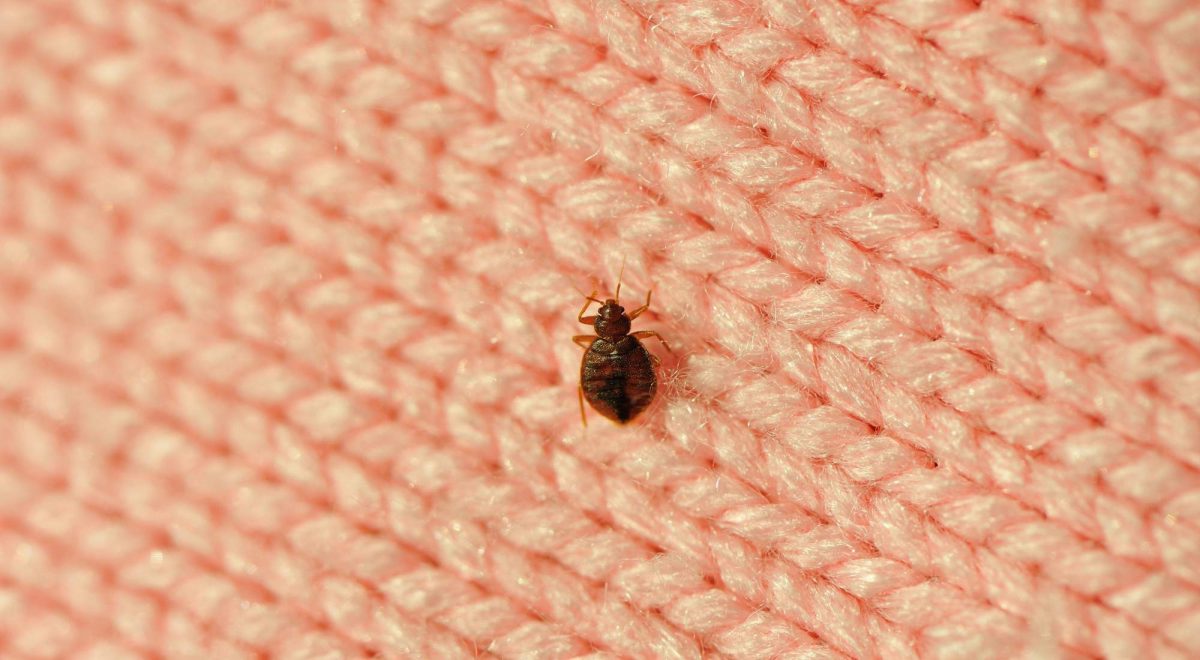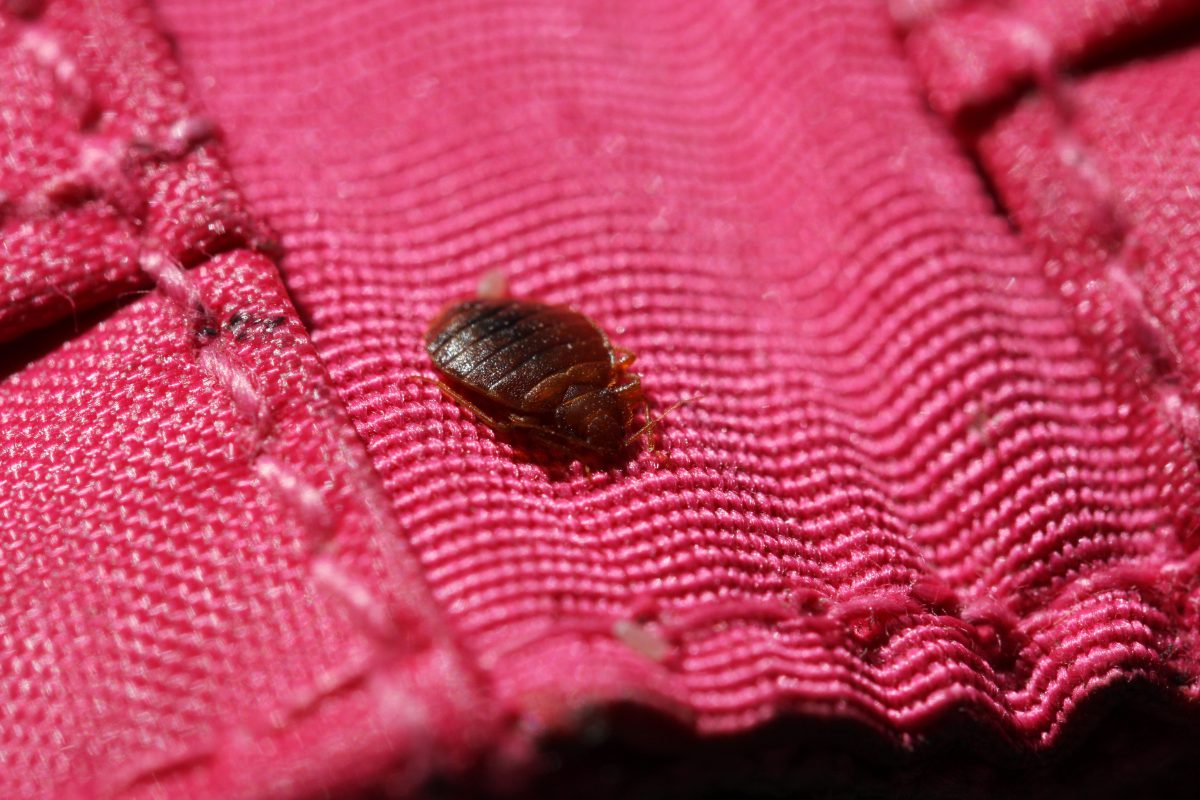Bed bugs — just the mention of them makes you squirm and itch. Thinking about them crawling in your bed or on your body drives you over the edge.
Bed bugs are a reality that many people in the United States and across the world have faced, but you’ve got questions:
- What attracts bed bugs in the house?
- What attracts bed bugs to your body?
- What attracts bed bugs to your bed?
In this guide, we’ll seek to answer those questions and give advice on how to prevent a bed bug infestation and how to get rid of them if they make it into your home.
Table of Contents
- What Is the Main Cause of Bed Bugs?
- What Are Bed Bugs Attracted To? Top 3 Things
- 2 Common Myths About What Attracts Bed Bugs
- Frequently Asked Questions About Bed Bugs
- Sleep Tight and Don’t Let the Bed Bugs Bite With Bed Bug Heat Treatment from Pure Environmental

What Is the Main Cause of Bed Bugs?
Some of the main causes of bed bugs include:
- Traveling
- Used furniture
- Schools and daycares
- Dirty laundry; and
- Other locations where bed bugs or people with bed bugs have been
Because bed bugs need humans for food, bed bugs tend to follow the human population.
That means wherever humans live and move, there’s a chance for bed bugs to tag along with them.
What Are Bed Bugs Attracted To? Top 3 Things
In one word … humans.
We know — it’s both alarming and horrifying, right?
Despite the scare factor, once you know about bed bugs and why they act and eat the way they do, it’s easy to understand why bed bugs flock to us human folk.
None of us can survive without food, and since humans are bed bugs’ primary food source, bed bugs want to be where we are, and they thrive in our presence.
The following three factors explain why they love us so much.
#1: Carbon Dioxide
Since bed bugs are attracted to warm-blooded animals, it makes sense that they are drawn in by the carbon dioxide that warm-blooded animals exhale — warm-blooded humans included.
So, basically, wherever we are breathing, bed bugs are alerted that a food source is in the vicinity.
Though bed bugs are found in many places (we’ll get to that later — another hair-raising fact), their name is appropriate because they like to find dark places to hide that are still near their food source and the carbon dioxide they exhale.
The bed is the perfect place because we’re lying still and the carbon dioxide we exhale circulates around our heads. This is one reason why bed bugs will often bite on the neck or head — though they may bite other places of the body as well. We know, it’s not a pleasant thought.
#2: Heat
The heat from warm-blooded animals is another thing that attracts bed bugs.
Do you look forward to jumping in your cozy bed for a good night’s sleep?
Bed bugs do, too, only they likely aren’t sleeping, but are busy looking for their food source — you.
While we’re sleeping, our bodies generate heat, and even if the room temperature is colder, bed bugs are drawn to our warm moist bodies while we sleep, knowing that a food source is nearby.
According to a report from the Virginia Department of Agriculture and Consumer Services, bed bugs sense cues from short distances. They can sense carbon dioxide from three feet away and even shorter distances for heat.
For that reason, and because bed bugs don’t have wings and can’t jump, they must stay near their source of food. They’re crafty and sneaky, hiding in crevices in mattresses and coming out at night to feed on their unsuspecting host. According to the CDC, bed bugs can travel an amazing 100 feet in one evening but tend to stay within 8 feet of their sleeping food source.
#3: Dirty Laundry
We’ve all got it — dirty laundry. It’s just a part of life. But some of us generate more of it than others, especially those who travel a lot or have large families.
Because our clothes and linens capture our body’s …
- Oils
- Sweat; and
- Scent
… bed bugs may be drawn to it thinking a meal is in sight.
Not finding a warm-blooded animal close by, bed bugs can make themselves at home in the folds of the laundry waiting for a human host to stroll by.
So it’s best to follow your mom’s instructions and keep your dirty laundry off the floor and regularly wash your clothes and bed linens.
And if you do find yourself in the unpleasant circumstance of a bed bug infestation …
- Washing your laundry and bedding in hot water; and
- Drying them on the highest heat setting
… will help kill the bed bug and their eggs.

2 Common Myths About What Attracts Bed Bugs
Questions and myths abound when it comes to bed bugs:
- Are they attracted to wood?
- Are they attracted to urine?
- Are bed bugs attracted to certain blood types?
- Can we see them?
- Don’t they only live in dirty places?
We’ll look at some common myths and give you the low-down on what’s true and what’s not.
Myth #1: Bed Bugs Are Attracted to Dirty Spaces
As we’ve discussed above, bed bugs are attracted primarily to warmth and carbon dioxide, not dirt, filth, or grime.
That being said, areas of clutter can provide ideal locations for bed bugs to hide while they are waiting for their next meal.
So, whether it’s true or not that cleanliness is next to godliness, keeping your surroundings clutter-free can certainly lessen the chances of bed bugs hanging around your abode.
Myth #2: Bed Bugs Are Attracted to Wood
Just like the clutter mentioned above, wood and the cracks in wood can be ideal homes for bed bugs to hide. But, it’s unlikely that bed bugs will find wood to be a comfortable home or a place to find food.
So, if you’re thinking of throwing out your wooden furniture because you think it might harbor bed bugs, don’t be so hasty. Instead, if you think you have an infestation, you’d do better to take a close look at the folds and crevices of your mattress.
And if you find bed bugs, call in the professionals at Pure Environmental.
We use convection heat to wipe out bed bugs in one treatment — including larvae and eggs — without the use of chemicals.
Frequently Asked Questions About Bed Bugs
Now that we’ve debunked some popular myths, let’s look at some frequently asked questions about these critters.
What Do Bed Bugs Eat?
Bed bugs survive solely on the blood of warm-blooded animals. And they are in good company with other blood-sucking insects like:
- Mosquitoes
- Black flies
- Fleas
- Lice
- And more
Though bed bugs prefer the blood of humans, they may feed on other animals when a human host isn’t available. In that case, bed bugs may feed on the blood of:
- Cats
- Dogs
- Rodents; or
- Birds
Where Can Bed Bugs Be Found?
Here’s another shocking fact — bed bugs can be found just about anywhere!
You might find them lurking in …
- Homes
- Hospitals
- Movie theaters
- Hotels
- Restaurants
- Second-hand stores
- Furniture moving vans
- Uber cars and taxis
… and visiting any of those locations where an infestation or infested person has been can mean you may be exposed.
And bed bugs are not partial. They’ll search out humans no matter the:
- Location
- Cleanliness of the environment; or
- Socio-economic status
A survey performed by the National Pest Management Association found that one in five Americans have had a bed bug infestation in their home or know someone who has experienced bed bugs at home or a hotel.
How Do People Get Bed Bugs?
People get bed bugs like they get a common cold — from exposure.
Exposure can happen anywhere by coming in contact with someone who has them or visiting a space where a person who has them has been. More or less, any place you’ve sat or rested is a potential location where you can pick up bed bugs.
Bed bugs are the hitchhikers of the insect world. They catch a ride on belongings like:
- Suitcases
- Purses
- Coats
With the world of national and international travel readily available, bed bugs can be transported easily. Therefore, people who travel, or guests who visit your home, may have an increased risk of encountering bed bugs.
For example, let’s say your neighbor unknowingly has a bed bug infestation. He leaves his home in an Uber to head to a lunch meeting at a local restaurant. Leaving the restaurant in another Uber, he travels to the airport to board a plane for an overnight business meeting.
After a night in a hotel and a day of meetings, he heads back on another plane and finally arrives home via another Uber. Because of his encounter with bed bugs in his home, he’s now exposed all of the areas he’s visited.
How Can You Tell if You’ve Been Bitten by Bed Bugs?
Because bed bug bites are painless, many people don’t even realize they are being bitten — besides the fact that they are probably asleep when the bed bugs attack. And bed bugs don’t hang around after feeding. They promptly finish the meal and scurry back to their hiding place.
The signs of bed bug bites vary from person to person. Some people may develop …
- Rashes
- Lesions
- Bumps; and
- Pustules
… that can be red or itchy while others may experience no symptoms at all.
Sometimes bites from bed bugs can be confused with other bites like those from fleas and mosquitoes.
Because they are drawn to the carbon dioxide source, bed bugs often bite on the head and neck, but they can bite other areas of the body that are exposed, including the:
- Legs
- Arms
- Feet
- Hands
- Shoulders
- Legs; and
- Face

Are Bed Bugs Bites Hazardous to Your Health?
Despite how unsettling a bed bug infestation can be, their bites don’t transmit disease and aren’t dangerous in that way.
However, if someone with bed bug bites suffers from excessive itching and scratching, it could lead to broken skin which could leave room for infection. Using an over-the-counter antibiotic cream should speed the healing process.
Beyond the physical effects of bug bites, some people may experience psychological symptoms like …
- Anxiety; and
- Fear
… caused by the inability to sleep or the idea of bugs crawling on you in your sleep.
So, can bed bugs be dangerous to your health? Technically, no. Nevertheless, their presence is disturbing and troublesome.
How Can You Prevent Getting Bed Bugs?
The best way to prevent bed bugs is to mitigate exposure by doing the following:
- Check your home and car regularly for infestations.
- Be aware of your surroundings and know where bed bugs are likely to hide.
- Wash your bedding regularly, and wash guest bedding in hot water immediately after a visit.
- Wash other laundry regularly.
- Get a handle on clutter and keep laundry from piling up in baskets or bedroom floors.
- Check beds and furniture when traveling by using a flashlight.
- Checking your seat at the movie theater might also be a good idea.
- Check used furniture thoroughly before bringing it into your home.
What Should You Do if You Think You Have Bed Bugs?
Heaven forbid you ever have to deal with a bed bug infestation, but it’s better to be armed with the right information to know how to handle it if it becomes a reality.
Before we tell you what you should do, let us tell you what you shouldn’t do.
We all love do-it-yourself solutions, but this is one time when you don’t want to try to solve the problem yourself. Trying over-the-counter treatments can drive the bed bugs deeper into your furniture or structures making them even harder to eradicate.
Additionally, because bed bugs are …
- Experts at hide-and-seek
- Breed better than rabbits; and
- Can live for up to a year as an adult
… do-it-yourself methods are not a good idea.
If you have bed bugs or think you do, you should absolutely call in the professionals.
Our team of experts at Pure Environmental has experience in using thermal remediation with success. We’ll answer your questions and make sure you understand the entire process before we get started.

Sleep Tight and Don’t Let the Bed Bugs Bite With Bed Bug Heat Treatment from Pure Environmental
Don’t waste time and money with DIY tactics or over-the-counter measures that aren’t guaranteed to work.
Take care of a bed bug infestation the right way with proven services and techniques with Pure Environmental.
We’ll do a thorough inspection, provide you with an estimate, and outline the process before proceeding with any treatment.
We use heat to wipe out bed bugs in one treatment.
By using convection to force heat into …
- Mattresses
- Furniture
- Walls; and
- Other difficult spots
… we can kill bed bugs (eggs, nymphs, and adults) in an environmentally friendly way without the use of chemicals.
Contact us today to schedule an inspection or to get an estimate.
Recent posts
- Home Insurance During Renovations: What Is Covered and What To Know Before Getting Started
- Mitigation and Restoration: Understanding the Difference Between the Two and Why They’re Both Necessary
- Should You Stay or Should You Go? Know When To Walk Away From a House With Mold
- How To Get Rid of Weed Smell: Top Tips To Help Cannabis Users and Growers Keep Their Homes Smelling Fresh and Clean
- HVAC System Longevity and Understanding When It’s Time To Replace Yours